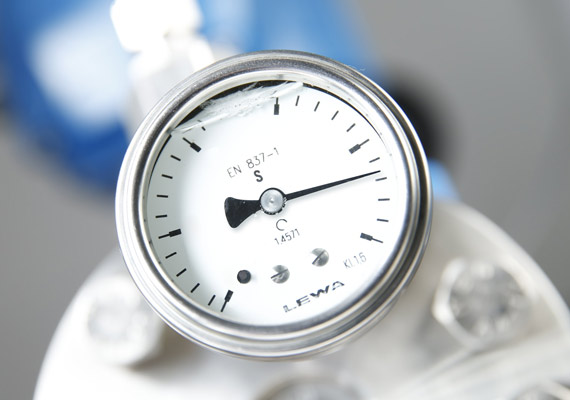Background
Description/function:
All LEWA diaphragm pumps with sandwich diaphragm feature two diaphragms lying on top of each other (made of plastic or metal).
On the discharge stroke the membranes are connected mechanically positive-locking with each other. On the suction stroke they are hydraulically coupled via a fluid or grease film. The exceptions are the M9 pump heads and LEWA ecodos pumps. With these models, the diaphragms are connected by a mechanical positive lock.
In both cases, the space between the two diaphragms is pressureless in normal operation. Only if a diaphragm is damaged does the fluid penetrate into the diaphragm space, leading to an increase in pressure. This increase in pressure in the diaphragm space is used to indicate diaphragm damage.
There are various systems available for the display. The most common are manometers. pressure switches, or contact manometers. But special solutions, for example with pressure transmitters, can also be implemented.
Of course all solutions are also available with Ex-proof protection.
Function
Thanks to the patented DPS (Diaphragm Protection System), the pump heads have large safety reserves.
The DPS especially helps in case of upset conditions in suction or discharge lines as well as for start up:
The pump remains hydraulically stable, even after massive operational errors. Damage to the pump is therefore impossible and, after removing the source of malfunction, the pump starts up again immediately.
In addition, DPS technology enables a suction lift capability that is globally unique in the field of hydraulically actuated diaphragm pumps. Clogged suction filters with increased pressure drops or storage containers installed underneath the pump are rarely a problem for the ecoflow and ecosmart series.
